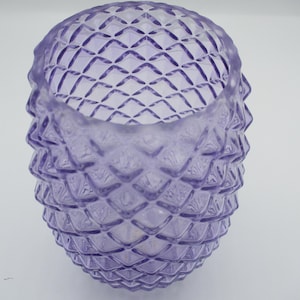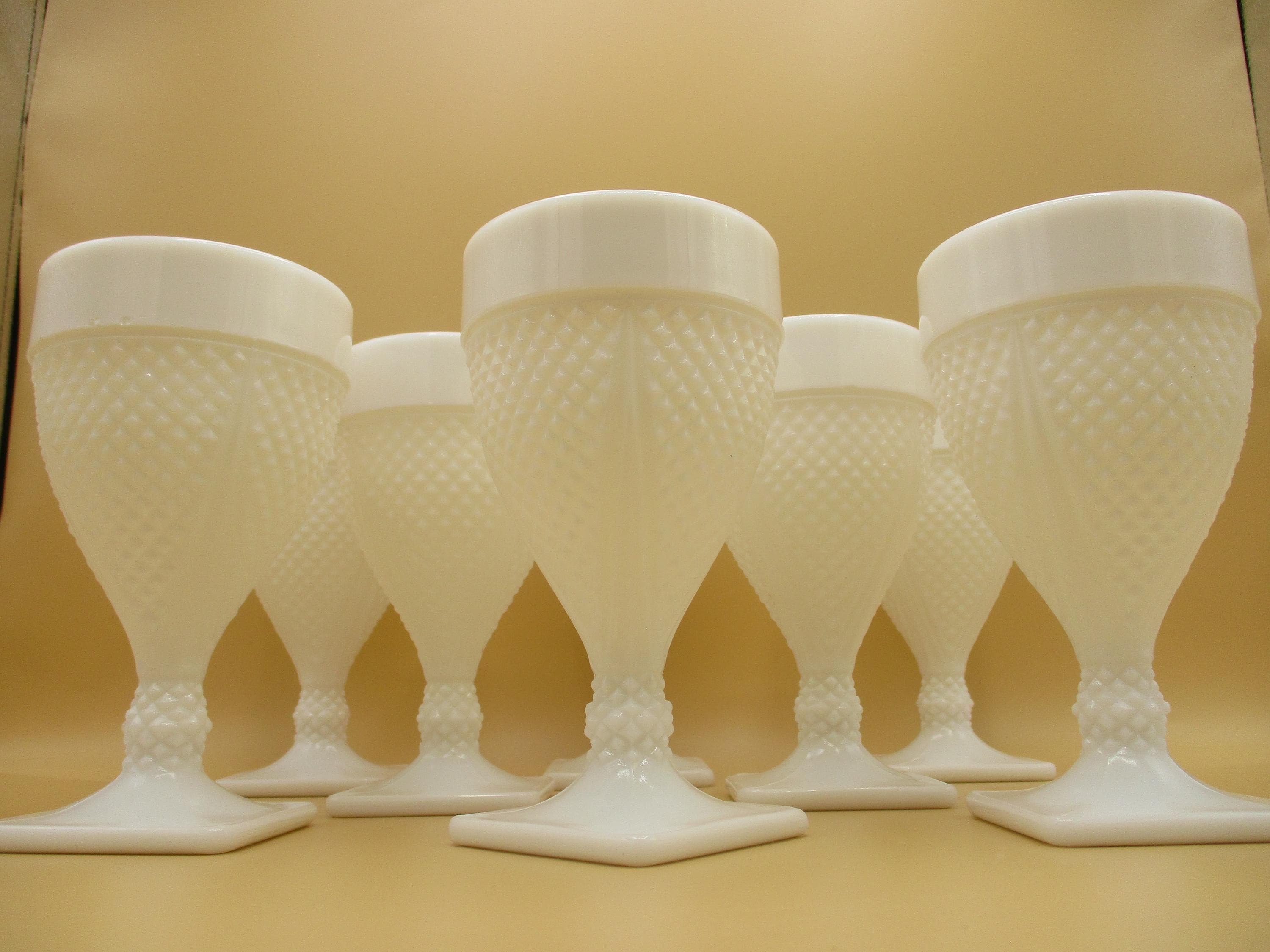
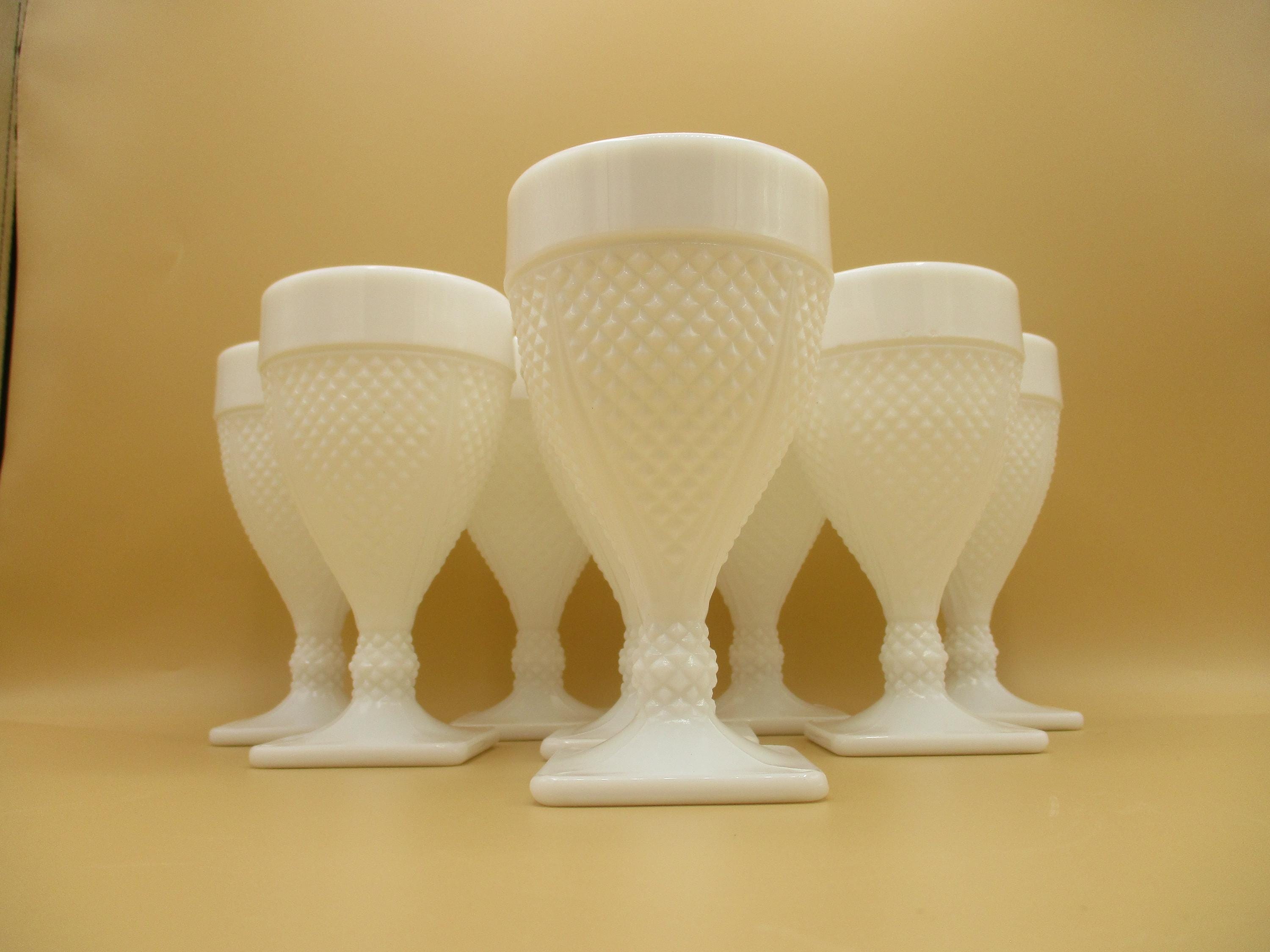

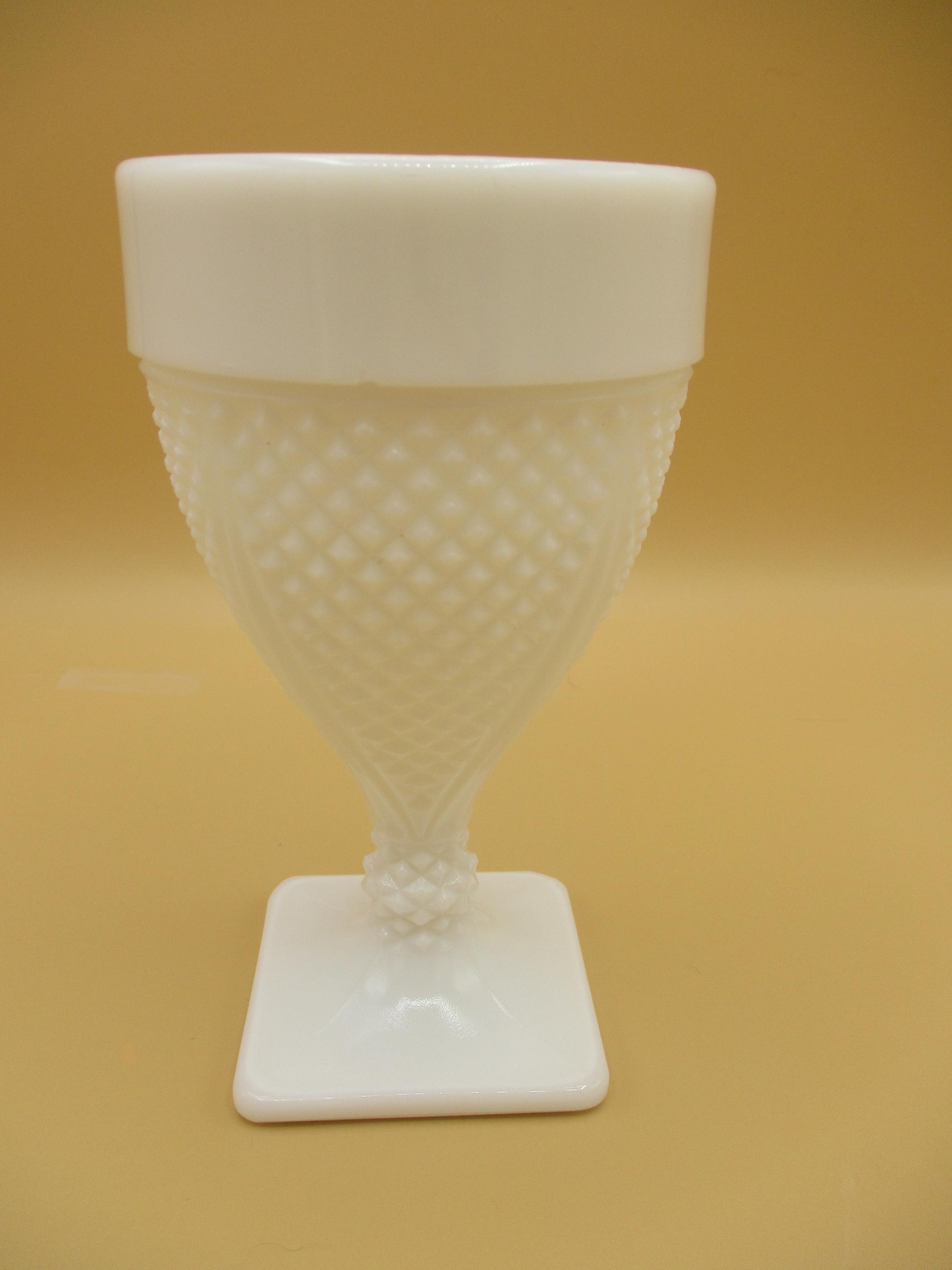
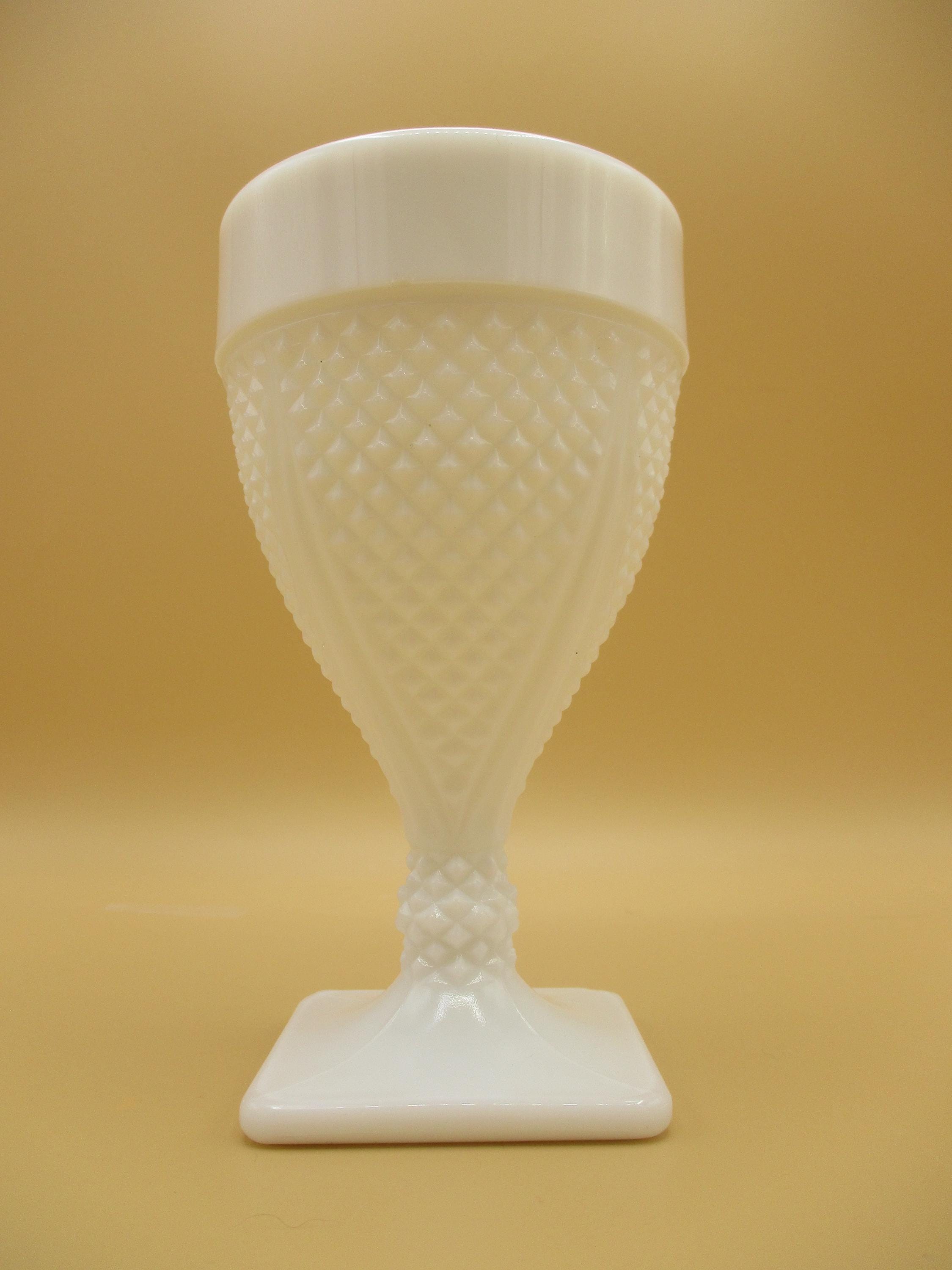
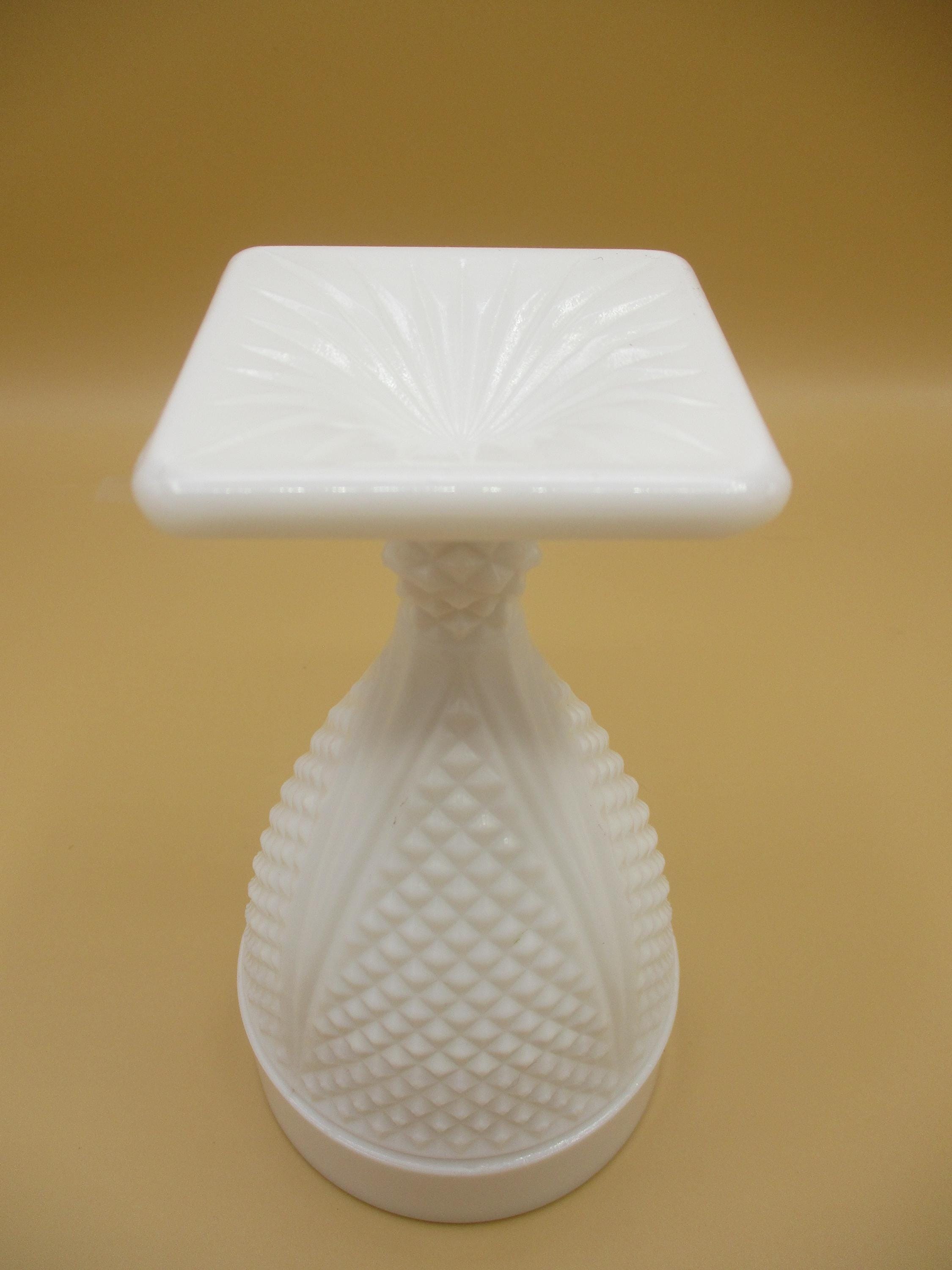
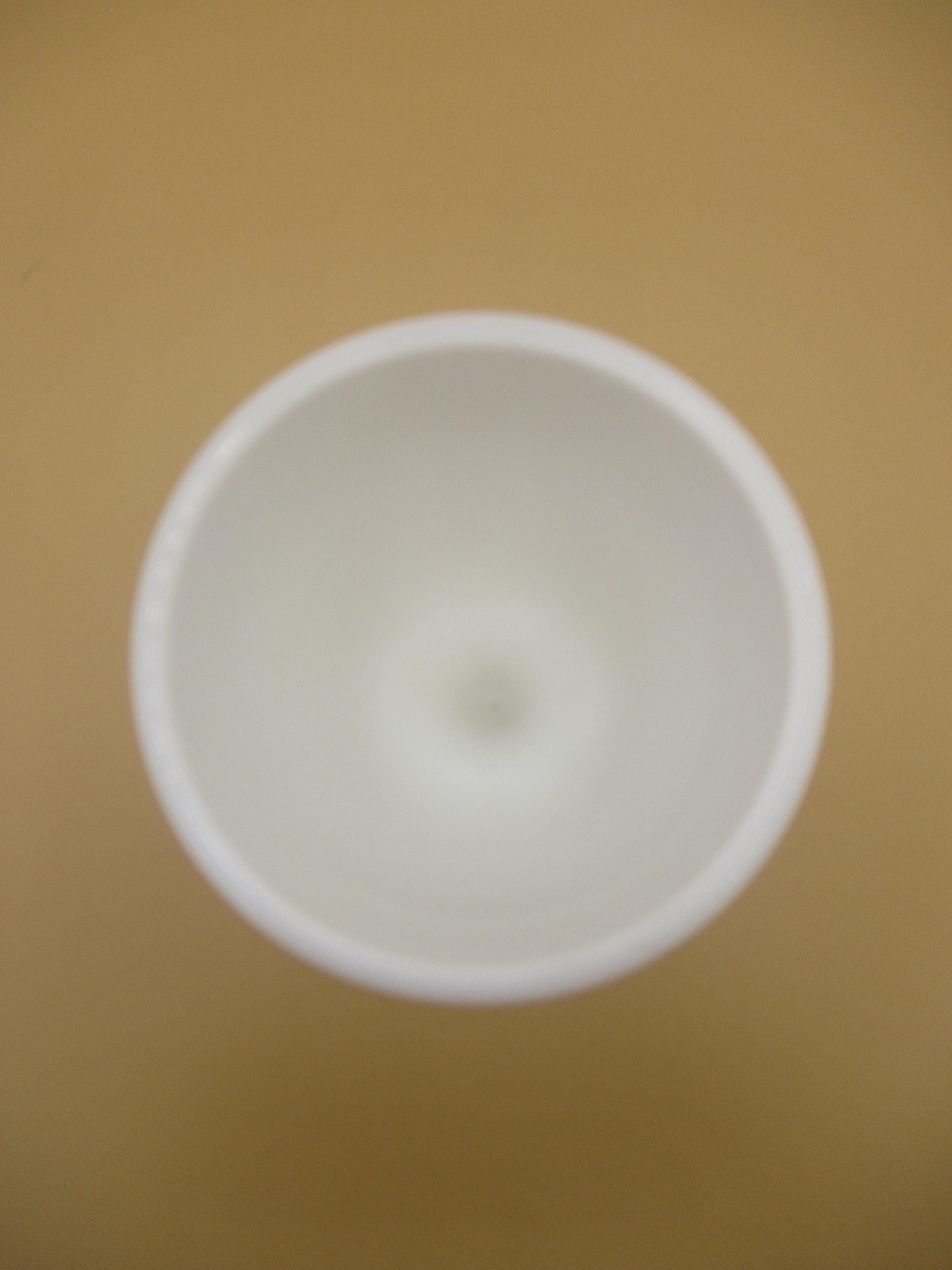
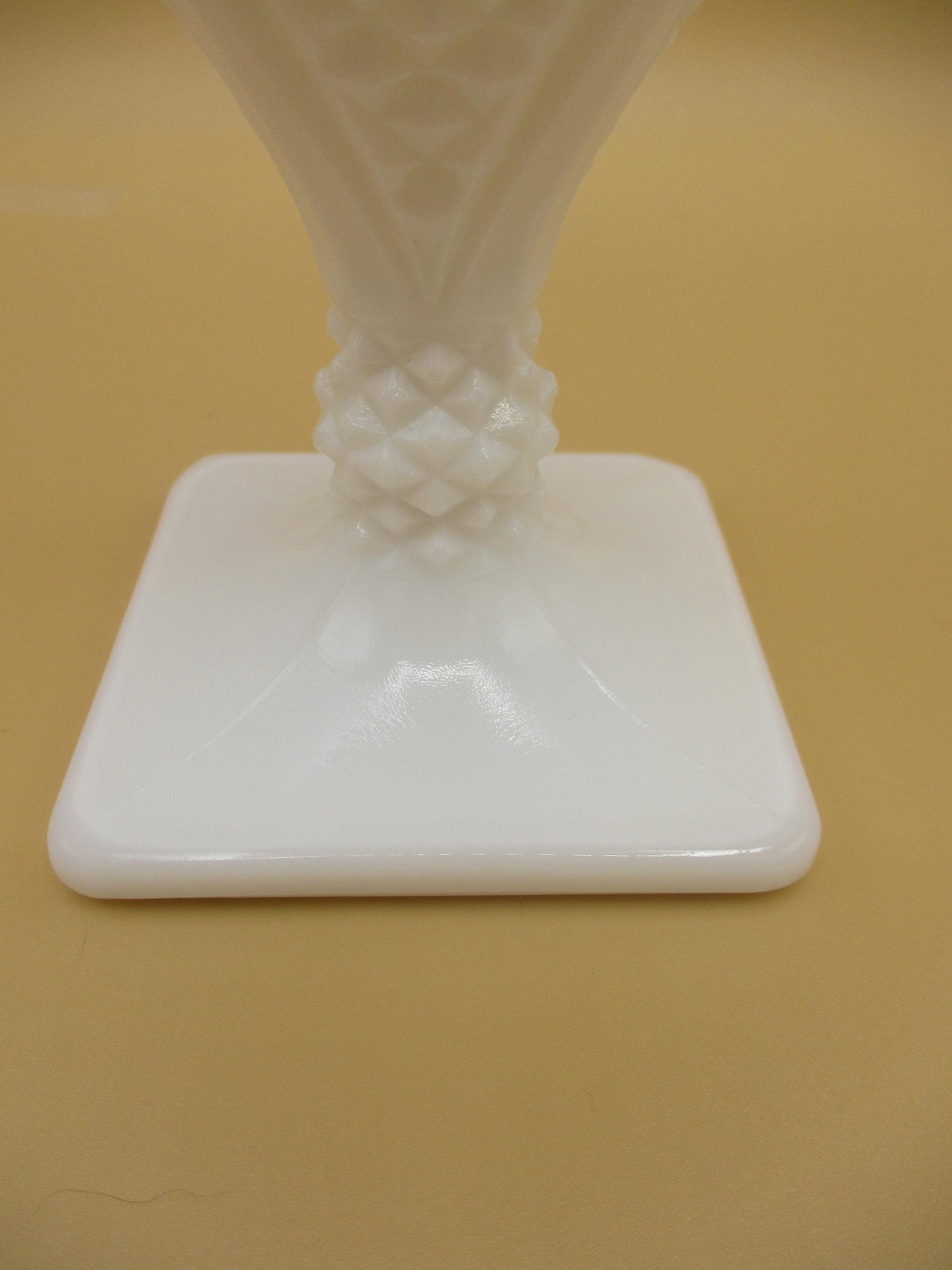

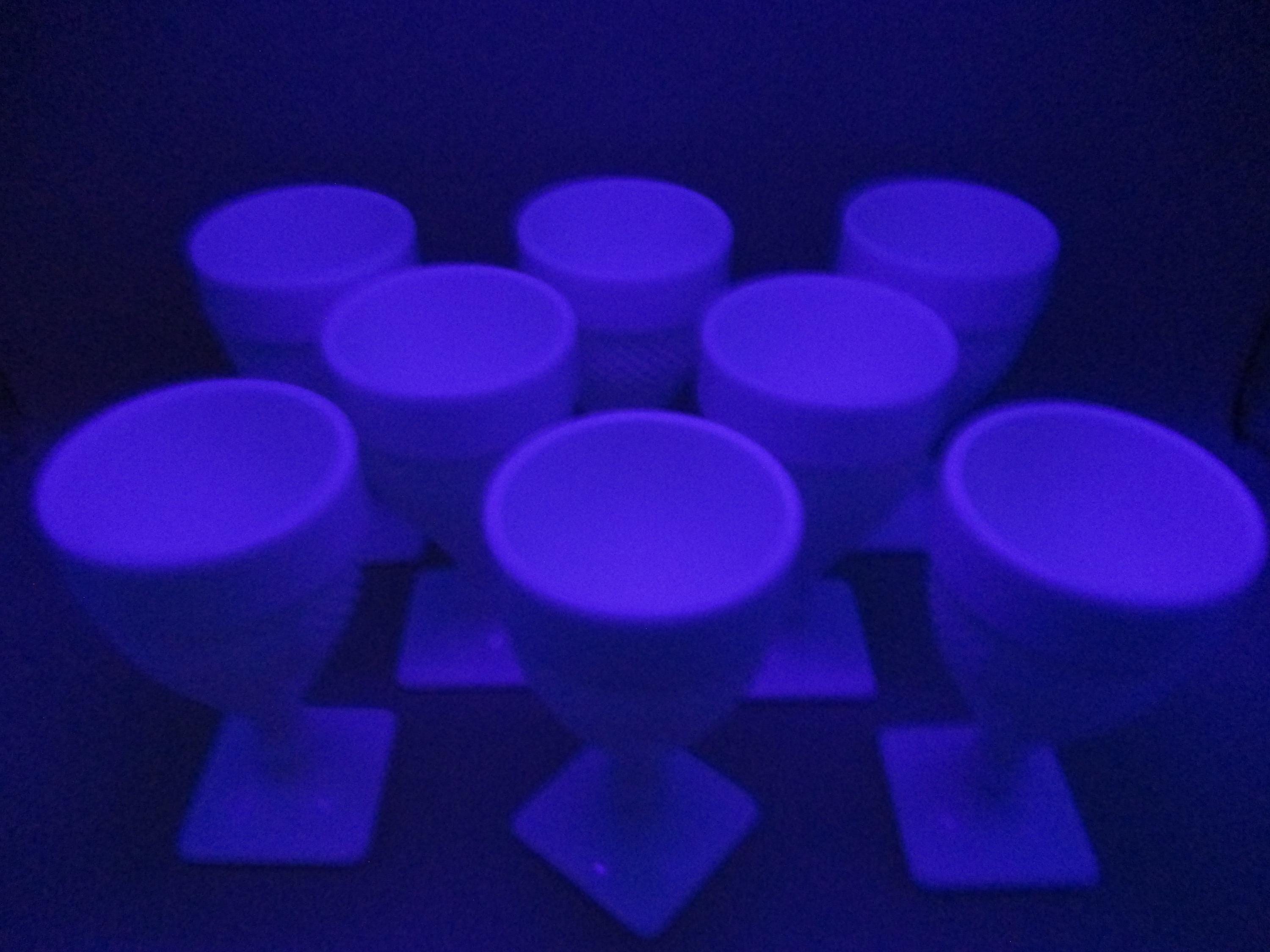
Collectible Glass
L.E. Smith Glass Co. Milk Glass Chalices-USA, circa 1955-1965
$100.00
-
DetailsEight(8) Milk Glass Chalices/Water Goblets made by L.E. Smith Glass Co. in Greensberg, Pennsylvania between 1955-1965 as part as L.E Smith's "Early American Milk Glass Collection" of drink-ware.
The EAMGC was Smith's design collection of "milk glass" that was inspired by Early American and pioneering milk glass-making furnace companies of the 1800's. East American glass companies like McKee Glass, Boston Sandwhich Co., and Curly Robinson & Co. were responsible for several early "milk glass" designs. Diamonds and hobnails were the most popular shapes designed at that time so they were often embossed into the glass-wares. An outbreak of American consumption of milk glass began in the early 1950's. L.E Smith began molding the "Early American Milk Glass Collection in 1955 and continued the pattern until 1965.
The collection was cast molded into one pattern that was a hybrid of the earlier milk glass patterns "raised diamonds" and "hobnails" patterns". The patterns mostly consisted of these glass-wares:
Vases
Salt & Pepper Shakers
Candy Tray ( ruffled edge/no lid)
Candy Dish w/Lid
Sugar/Jam Serving Dish (two-handled)
Water Goblet (Chalice)
Creamer
Vases
Teacup
The L.E. Smith Glass Company was a specialty glass maker in Mount Pleasant, Pennsylvania that had been producing glassware since 1909. The company's customers included Williams-Sonoma and Martha Stewart Living, and their products were featured in catalogs for Bloomingdale's, Spiegel, Restoration Hardware, and Neiman-Marcus.
L.E. Smith "Lewy" purchased a failing glass furnace factory in Mt. Pleasant, Pennsylvania, for $8400 on October 30, 1909, and L.E. Smith Glass Co. was born.
Lewis E. Smith became so caught up in glass making processes, that he spent most of his time producing glass kitchenware. As the story goes, Lewis invented the glass percolator top, the first glass mixing bowls, a redesigned reamer, and a “Glass Sanitary Drinking Fountain for Chicks or Fowls.”
Lewis E. Smith moonlighted as a chef, so the factory-made pressed glass jelly tumblers and sealed teacups for Smith to bottle his special mustard recipe. Lewis E. Smith retired from CEO in 1911, and had close friend Charles Wiblere assume control of the factory and furnace. It was "Lewy" Smith himself that started and operated a Mustard Department on the factory floor. The Mustard Department operated from 1910 to 1916, and the plant apparently canned olives for the War Effort during the same period. Like all the other glass companies of the time, L.E. Smith produced colored glass from the late 1920's until the late 1930’s. Known as "depression glass" Smith made glass in a variety of colors including pink, green, yellow, blue, and even hit upon a formula for black glass that set them apart from other manufacturers of the time. By the end of the 1930's, Smith Glass has factories in nearby Jeanette and Greensburg, Pennsylvania. It was the Greensburg factory that in 1955 to 1965 made "milk glass" housewares and drinkware for the company. By 1971, Smith started moving away from the milk and singular colored glass and started getting into the "resurgence wave" of Carnival Glass production.
The 1980's and 1990's saw a decline in glassware due to imported goods, plastic production, and a country drinking more bottled water, so Smith Glass's production declined rapidly, and they closed almost all their factories except the original one in Mt. Pleasant. In early-2004, L.E. Smith Glass Co. ceased all glass production. In mid-2004, the assets of the company, including equipment, the Mt. Pleasant factory and property, machinery, and their glass molds, were all purchased by William A. Kelman a Scottish glassmaker who intended to form a new company called Port Augustus Glass Co. LLC, named after a town in Scotland.
By mid-2005 Kelman was already bankrupt and in 2010 the original factory building became The Edge Sports Academy of Mt. Pleasant. And finally.... L.E. Smith Glass Company's time here was a memory when in 2018 The Edge Sports Academy was out of business and the building was demolished.
NOTES:
Milk glass is an opaque or translucent, milk white or colored glass that can be blown or pressed into a wide variety of shapes. First made in Venice in the 16th century, colors include blue, pink, yellow, brown, black, and white. Milk glass is commonly confused with opaline.
A water goblet is a stemmed drinking glass with a wide bowl and a footed base that's often used to serve water. Water goblets are known for their elegant designs and can be made of glass or metal. Goblets are also commonly referred to as a chalice.
All eight glasses come with purchase. Some of the glasses under brim have some light fragmenting but not bad.... see photos. Additional photos available upon request...just PM shop.
UV photo included in gallery.
Each glass weighs 12.5 ounces and measure 5-7/8" Tall 9.5" Body Circumference (grip) 2.5" X 2.5" Base
Liquid capacity is 6 fluid ounces
MemoryLaneVintiques sanitizes all glassware, glazed pottery, jewelry and resin cast items before packing for shipment....100% Guaranteed!
ETSY INTELLECTUAL PROPERTY POLICY
As a venue for artists, designers, and makers, Etsy takes intellectual property rights very seriously. We comply with intellectual property laws and industry best practices in order to maintain the integrity of our creative marketplace. This Intellectual Property Policy explains how we address allegations of infringement; how authorized parties can submit reports of infringement regarding content on our marketplace, and how Etsy sellers can respond when their listings or shops are affected by a report.
ANY COPY AND PASTING OR PLAGIARIZING OF MATERIAL
ON MEMORYLANEVINTIQUES IS SUBJECT TO ETSY INVESTIGATION AND PENALTIES!
MemoryLaneVintiques research also protect our shop from Intellectual Property Theft by researching for violators of our material. Be respectful!
Chad & Jennifer Johnston (August 2024)


